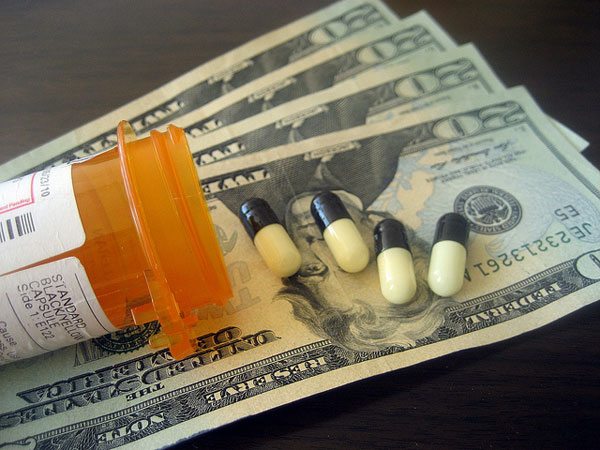
May 17, 2018; HealthDay News (UPI) and the New England Journal of Medicine
Nonprofits are becoming more and more involved in prescription drug pricing, specifically in creating alternative sourcing and distribution networks. We addressed this plan earlier in the year. Recently, the plan’s creators used the New England Journal of Medicine to lay out some strategy points we think are worthy of attention, particularly the use of competition to drive prices down. This was part of the justification for the Affordable Care Act’s nonprofit health co-ops, but the effort there was so tightly controlled and constrained by government that it was doomed nearly from the start. Rick Cohen documented this at the time in “Why 5 New Nonprofit Health Insurance Cooperatives Failed to Thrive: The Federal Undermining of a Field of Nonprofits.”
In terms of prescription drugs, the numbers are staggering. According to the federal Centers for Disease Control and Prevention (CDC), US health expenditures in 2015 totaled 17.8 percent of gross domestic product (GDP) or $3.2 trillion. Prescription drugs alone were 10.1 percent of this amount, or $324.6 billion—about $1,000 for every man, woman, and child. By contrast, in 1980, prescription drugs cost $12.5 billion ($30.9 billion, adjusting for inflation). In other words, the inflation-adjusted cost of drugs has increased tenfold in 35 years. And it could get worse; the Centers for Medicare & Medicaid Services predicts that prescription drug costs between 2016 and 2025 will climb an average of 6.3 percent a year.
Naturally, drugs are better today than in 1980, but are they ten times better? Such are the numbers and national trends that are driving hospitals to think about making an unusual market intervention. As Amy Norton writes for HealthDay, “Generic prescription drugs should be cheap, but prices for some have soared in the United States in recent years. Now, a group of US hospitals thinks it has a solution: a nonprofit drug maker.”
The person spearheading this effort, dubbed “Project Rx,” is Dan Liljenquist of Intermountain Healthcare, a healthcare network in Utah. Intermountain aims to launch Project Rx next year in consortium with Michigan-based Trinity Health, and two St. Louis-based health providers—SSM Health and Ascension—supported by philanthropists and the US Department of Veterans Affairs.
Liljenquist and his colleagues, Ge Bai, Ph.D., CPA, and Gerard F. Anderson, Ph.D., detail their approach in the New England Journal of Medicine. As they explain, the goal is to “establish a nonprofit generic-drug manufacturer with the explicit mission of producing affordable versions of essential drugs and ensuring a stable supply of such products.”
Ge Bai, an assistant professor at Johns Hopkins Business School in Baltimore and co-author of the article, notes that “It’s not the first time the idea of a nonprofit drug company has been floated.” (For example, it comes on the heels of a related attempt by Amazon, Berkshire Hathaway, and JPMorgan Chase to form “an independent company that is free from profit-making incentives and constraints” to provide health insurance, covered in NPQ earlier this year.) But Bai thinks Project Rx has “a better shot at success,” Norton writes. A key difference is that, “Hospitals know how much of a given drug they need, and the drug manufacturer will be guaranteed a minimum volume of sales—at a predetermined low price.” Bai also told Norton that the company “could help drive down generic drug prices by introducing competition into markets where there currently is none.”
Sign up for our free newsletters
Subscribe to NPQ's newsletters to have our top stories delivered directly to your inbox.
By signing up, you agree to our privacy policy and terms of use, and to receive messages from NPQ and our partners.
Norton notes that high drug costs are common for “generic drugs without a large customer base—for uncommon medical conditions, for instance.…Increasingly, companies are buying up monopolies on old, off-patent drugs. Then they have the power to dictate the price.”
Norton elaborates,
Possibly the most famous case involved the anti-parasite drug Daraprim, which has a market of only about 6,000 patients in the United States, according to the report. In 2015, the pharmaceutical company Turing bought the rights for the drug, then promptly raised the price by more than 5,000 percent—from $13.50 a pill to $750.
Another example in the report is a drug called Syprine. It has been used since the 1960s to treat Wilson’s disease, a rare condition that causes copper to accumulate in the organs. After the company Valeant acquired rights to make the drug in 2010, it raised the monthly price from $652 to nearly $21,300.
According to Bai, Project Rx will work with manufacturers to provide hospitals generic injectable drugs that are currently in short supply and high priced.
“It’s a feasible plan,” says Jack Hoadley, a researcher at Georgetown University’s Health Policy Institute in Washington, DC, who is unconnected with the project. “Lack of competition is the problem with certain generic drugs,” Hoadley says, “so if a nonprofit essentially creates competition, one of the expectations is that for-profit companies will lower their prices.”
“This wouldn’t address the issue of highly expensive drugs with patent protection,” Hoadley cautions. Still, Hoadley adds, “this could eventually make a big difference for certain patients. Off-patent drugs should be cheap.”—Steve Dubb












